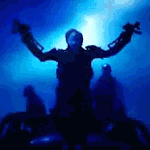|
LibCrusher posted:Ö whatís the best solution for out-of-the-box astronomy and Astro photography? I wanna look at planets and nebulas and poo poo but I donít have the time to devote to learning You want contradictory things and you donít have time for knowledge. Get hosed, ďlibcrusher.Ē edit: glorious page snipe edit: Iím definitely being a dick for little reason, Iíll back off. duodenum fucked around with this message at 03:04 on Jul 10, 2021 |
|
|
|

|
| # ? Apr 25, 2024 01:09 |
|
duodenum posted:You want contradictory things and you don’t have time for knowledge. Get hosed, “libcrusher.”
|
|
|
|
LibCrusher posted:I did watch a YouTube video of a slurring Englishman babble about it for several minutes, but he didnít really seem to get to the point. Iím guessing that itís not the best value, but I guess what Iím asking is: will a nextar8 with an iPhone mount be better than it for the same price? Is it as easy to use? The whole point of products like the eVscope and the Vaonis STELLINA is ease of use. The Celestron will be a far better all round telescope. Serious astrophotography is not a casual hobby. Astrophotography for astrophotography's sake can be achieved on the cheap and with little effort, but you get out of it what you put in.
|
|
|
|
H110Hawk posted:
Nah I just think that if someone is willing to ignore all the effort posts and all the knowledge and ask for impossibilities and canít be bothered to study, he deserves less than even these words. Maybe donít pass judgement until youíre on a device where you can read and absorb the context.
|
|
|
|
Leaf Lock posted:The whole point of products like the eVscope and the Vaonis STELLINA is ease of use. The Celestron will be a far better all round telescope. Serious astrophotography is not a casual hobby. Astrophotography for astrophotography's sake can be achieved on the cheap and with little effort, but you get out of it what you put in. Iíve been interested in amateur astronomy for a long time, and most recently went on a stargazing trip on Mauna Kea that really impressed me. they were manually pointing an 11Ē telescope and we were able to see some really cool clusters and nebulas. I was just hoping to be able to replicate that experience without having to buy a dozen different products and bring a laptop with me. Forgive me for saying that a lot of the posts in this thread, and itís equivalent on Reddit, are intimidating with the amount of equipment and level of processing yíall seem to use. Ideally Iíd get a scope and tell it to point at Jupiter and be able to see a cool image without having to sit out there with a laptop and stack hundreds of images. I understand products like the evscope and Stellina are not capable of matching a similarly priced DIY system, but their ease of use is really appealing. Which is why i was asking if a decent celstron with an iPhone mount would be able to get me most of the way there. And I think that guy hates my screen name, which is not meant to be taken seriously.
|
|
|
|
Leaf Lock posted:The Celestron will be a far better all round telescope. Serious astrophotography is not a casual hobby. Astrophotography for astrophotography's sake can be achieved on the cheap and with little effort, but you get out of it what you put in. This is definitely true- astrophotography can be very expensive and very involved. However, Reddit (and any hobby thread) can be a little hit-or-miss on advice for hobbies because the people who are most likely to respond are also those who are generally highly invested in said hobby, and they will immediately point a firehose of information at you and recommend expensive equipment. I'm absolutely guilty of this myself sometimes. Most people in your position just want to try it and see if you like it, and I respect that, but I think part of the reasoning behind the 'adverse reaction' was because things like stacking exposures and at least some rudimentary image processing are core tools of astrophotography in the same way a saw and a sander are core tools of woodworking. You will find it difficult to get very far in the hobby without learning them. The "bring your own DSLR" + a solid equatorial mount + telescope is a common route for anyone looking to jump into the hobby, but that is basically exactly what you said you didn't want. I think there are some one-shot color cameras aimed at the low-end amateur market that could be of interest, and there are 'video eyepieces' that are generally okay for planetary stuff...but I don't know enough about the offerings in the market to make any solid recommendations.
|
|
|
|
LibCrusher posted:Iíve been interested in amateur astronomy for a long time, and most recently went on a stargazing trip on Mauna Kea that really impressed me. they were manually pointing an 11Ē telescope and we were able to see some really cool clusters and nebulas. I was just hoping to be able to replicate that experience without having to buy a dozen different products and bring a laptop with me. Forgive me for saying that a lot of the posts in this thread, and itís equivalent on Reddit, are intimidating with the amount of equipment and level of processing yíall seem to use. Image stacking is required for astrophotography. Those all-in-ones do it automatically. Planets are very bright objects and are viewable at the highest magnifications in real time if atmospheric conditions are good enough. More than anything, that's the limiting factor for planetary detail. Though even for them stacking is essential because there are moments when the atmosphere in front of the planet is much clearer than normal and the more images you take the likelier you'll capture those moments and get a good image in the end. Long exposures and accurate tracking is essential for deep sky objects. Those are objects that are so faint that you can't see much detail and basically no color in real time. The only astrophotography I've done is with a cheap eyepiece camera, a dying craptop and a manual dobsonian that's way stiffer than it should be. I was able to get these results on the only night I've tried it, which seemed to be a good night atmospherically. I was able to see the red spot and many of the bands on Jupiter. I was able to see the color change Saturn undertakes in its southern region and the Cassini Division, which will soon disappear until about 2029 due to the planet's changing angle to us as it orbits around the Sun, so I was eager to check that off the list. I think I was only able to take 200 capture exposures because it was impossible to manually center the planets in the first place with such a high magnification and setup and they'd end up moving off the screen with anything longer. The bottom line is you either spend a lot of money on a compromised telescope that is only good at doing one thing, you go the DIY route (and still spend a lot of money) or you accept whatever result your phone or a cheap eyepiece camera will give you. It's probably better to start at the shallow end of the pool. I've never been to the deep end myself, but I find astronomy in general is more about going outside, doing things you've never done before, learning that the night sky is more than a random assemblage of dots, and appreciating what you're often only technically looking at than it is about getting stunning views and instant gratification all the time. I don't care how much you spend, if you go in with those expectations, you will be disappointed, so all the more reason to start cheap.
|
|
|
|
What kind of results could I achieve with one of these: https://www.celestron.com/products/nexstar-evolution-925-telescope And one of these: https://www.celestron.com/products/neximage-10-solar-system-color-imager That seems like the easiest route for this kind of thing, though it looks like the neximage10 is only capable of 10 second exposures. Iím not trying to go cheap, just trying to go easy.
|
|
|
|
Sorry if this does come off as fire hose, but thereís a lot of implied questions in your request. Phone posting so sorry if some of these numbers are inaccurate, but it gets you on your way if youíre serious about this. You did say under $3k. $3k can get you a pretty decent wide field dsoís or planetary setup but not both. 3k can get you a something like a red cat 51 $825, an eq5 mount $1500 a guide scope and camera $400. If you have a dslr you can use that or up your budget a bit and add an Astro camera from zwo or qhy. This even leaves enough room in the budget to upgrade to an eq-6 mount if you want No this isnít simple and there really isnít something simple that does what you want on the astrophotography front. Itís a complicated thing that requires highly precise parts. The red cat is really cool for itís size. If what you want to do is visual, get the biggest dobsonian you can afford and transport comfortably and some nice eyepieces to go with it. Edit: and this could easily be controlled by a raspberry pi that you can stick on the mount. The software for acquisition is free (astroberry). What you want to do is complicated so expect a long learning curve. simble fucked around with this message at 07:20 on Jul 10, 2021 |
|
|
|
LibCrusher posted:What kind of results could I achieve with one of these: https://www.celestron.com/products/nexstar-evolution-925-telescope You would never take a 10s exposure of a planet. So that is fine. They are too bright. Most planetary imaging is done by taking a video and then aligning and stacking the best x% of the frames of the video. Itís called lucky imaging.
|
|
|
|
simble posted:You would never take a 10s exposure of a planet. So that is fine. They are too bright. Most planetary imaging is done by taking a video and then aligning and stacking the best x% of the frames of the video. Itís called lucky imaging. Thanks! And what about nebulas and clusters? Im not expecting Hubble, but a bit of definition would be coolÖ
|
|
|
LibCrusher posted:Thanks! And what about nebulas and clusters? Im not expecting Hubble, but a bit of definition would be coolÖ Nebula tend to be really big, some clusters too. There's a free program called Stellarium that you can use to show the framing of your setup. You can enter in your focal length and sensor details and it will display what you'd see with that scope. I'll do a couple of objects to show you the difference. My scope has a 275mm focal length. The Nexstar you linked has a 2350mm focal length. That Nexstar has a shitload of focal length and will really reach out, but you do so at the expense of framing and dim objects will take hours and hours of light collection. Not to confuse matters but there is something called a "Hyperstar" that takes that F10 scope and makes it an F1.9 scope, or it will collect light 25 times faster. But at the expense of raw zoom. In a nutshell you can do planets and the moon really well or you can do everything else. Andromeda  275mm Focal Length  2350mm Focal Length Heart Nebula  275mm Focal Length  2350mm Focal Length M13  275mm Focal Length  2350mm Focal Length Saturn  275mm Focal Length  2350mm Focal Length
|
|
|
|
|
Yooper posted:Nebula tend to be really big, some clusters too. There's a free program called Stellarium that you can use to show the framing of your setup. You can enter in your focal length and sensor details and it will display what you'd see with that scope. I'll do a couple of objects to show you the difference. My scope has a 275mm focal length. The Nexstar you linked has a 2350mm focal length. That Nexstar has a shitload of focal length and will really reach out, but you do so at the expense of framing and dim objects will take hours and hours of light collection. Not to confuse matters but there is something called a "Hyperstar" that takes that F10 scope and makes it an F1.9 scope, or it will collect light 25 times faster. But at the expense of raw zoom. Thanks for your insight! So odd to think that something with such a huge primary mirror would require so much time collecting light. If I go for the hyper star Iíll have to scale back my scope to something in the ~$2k range. Youíve given me a lot to think about LibCrusher fucked around with this message at 17:10 on Jul 10, 2021 |
|
|
LibCrusher posted:Thanks for your insight! Planetary and deep space stuff tends to be mutually exclusive. The Hyperstar setup is the one time I've seen a scope be able to do both but I'm not sure what other downsides there are to it. That type of scope will also require collimation at some point.
|
|
|
|
|
You're on the right path, but one thing I learned early on is that you have to learn about lots of different, separate things that need to be brought together to do astrophotography (especially good astrophotography, which is needed to see the good stuff beyond planets and capture them in any reasonable amount of detail) - Cameras and how their sensors work, how to eliminate noise and capture more signal (exposure settings, stacking, flats, darks) - Optics, since you're bolting together a bunch of stuff in an optical train and need to understand focal lengths, lens characteristics, focusing, backfocus - Tracking and alignment, so you can stay pointed at the thing you want to take a picture of, and stay steady enough on it for good exposures (getting a good mount, doing a good enough alignment to reduce drift and tracking error, which depends on your target & setup) - Post-processing, since half of the job is merging all the data together (stacking) and tweaking things in something like Photoshop (levels, gradients, noise reduction) - The night sky, so you know what's up there and when it's visible, and how dim it is so you can figure out how much exposure you need and how the characteristics of your setup affect that (this is also where the planetary vs DSO difference comes in because they require mostly different setups) - A bunch more fiddly things like dealing with crappy software or bad/cheap hardware - Figuring out how much you'll need to spend to do all of the above Someone above mentioned how the folks on reddit r/astrophotography, r/telescopes etc. will come in with a ton of knowledge because they're super invested, but not a lot of folks focus on the low-end/budget really (except for things like the eVscope, Stellina, etc.) This is why you'll see a lot of people, including folks in here, recommend starting out with a DSLR on a tracking mount like a Star Adventurer, so you can learn the basics. And maybe a set of binoculars to learn the sky. You can, of course, throw more money at the problem too but we're talking amounts of money that most people aren't willing to spend to start a hobby. (maybe 5k on the low end? I have probably invested ~10k for what I'd call an intermediate setup) The other thing you can do is pick up a book and look through as it'll answer a lot of questions. I like this one although there are plenty of others: https://www.amazon.com/Astrophotography-Manual-Practical-Scientific-Approach/dp/1138055360/ re: Hyperstar, I'd not heard of it being used for planetary, really. It's a low-focal length high-aperture way to get as many photons as possible for dim targets. Planetary generally needs higher magnification and isn't so worried about aperture because planets are relatively bright. (the ones most people look at that you can see detail on - Mars, Jupiter, Saturn)
|
|
|
|
Sunday night was a weird night of attempted observing. No clouds, but transparency was garbage because of all the smoke in the air from wildfires. Air was still, though, so tried my best at logging some double stars for the A.L. program. Got four done before the transparency was so bad that the stars were too dim to star-hop by. The air was DEAD STILL though! Most stable seeing I've ever seen. I cranked up to 400x on a 2.2 arcsecond double star (Mu2 Bootis) and the separation was wide enough to drive a truck through. I saw airy disks and diffraction rings that looked like a diagram from Suiter that didn't waver at all. Just unreal, and almost unheard of for Colorado. It also allowed me to run some tests. I recently installed a 5v Noctua fan on my 6" dob. With completely still air to act as a reference, and the scope having already been equalizing with outside temperature for two hours, I switched the fan off and on repeatedly and watched the effects in the eyepiece at 400x. With the fan turned off, there was noticable vibration and wavering of the diffraction rings. With it running, the view instantly stabilized to perfection. I honestly didn't expect as significant of an effect as what I saw. I'll never observe without the fan running again! Edited to correct a grammatically wonky sentence AstroZamboni fucked around with this message at 00:34 on Jul 15, 2021 |
|
|
|
Finally had a good night. The AP rig shot the Elephant's trunk nebula followed by M31 to end the night. It's nice to be able to just pull it out, polar align, and go. I'll see how it stacks but might do a couple more nights or just bounce around a bit. Tested out a 3d printed mount for my Dobsonian that adapts the Celestron Starsense Explorer kit for use on the Dob. Worked exceptionally well, my kiddo was pushing the Dob around and just nailing the targets on the list. It's supposed to clear tonight, tomorrow, and Sunday, so I plan on following AstroZamboni's lead and getting a good night in.
|
|
|
|
|
Conditions have been so patchy it's been tough to get any observing in so I've been looking for gaps in the clouds and thinner areas of the smoke layer to haul out the scope to log a few things. Last night I had about half an hour at dusk before a thunderstorm rolled in but I was able to log all the ~4 day telescopic surface features for the A.L. lunar program.
|
|
|
This is 2.5 hours of IC1396, Elephant's Trunk Nebula. I'm not sure I've got the FL to really get into it. The whole structure looks cool though. And it's M31 Season! Prepare yourselves for thousands of M31's. And they are all beautiful. This one is 60 minutes of 30 second subs. Really pleased with how it looks for that little time. 
|
|
|
|
|
Iím really sorry for my lovely attitude, folks. I will shut the gently caress up and lurk, Iím really ashamed of how I let myself go.
|
|
|
|
AstroZamboni posted:I've been plugging through the A.L. double star program. 40% of the way through and even the "challenge" objects have been a cakewalk. I've also started in on the A.L. Hydrogen Alpha Solar award program with my PST. I already got the white light solar "Sunspotter" award, so the H-alpha is the next logical step. I'm trying to build up to the master observer and binocular master observer awards. This post was a dirty, dirty lie because not long after posting this I realized my observations were missing a key requirement of the program and I had to redo EVERYTHING, and I've only been able to make progress going back through in short, patchy sessions of 2 to 5 logs at a time. Back up to 20% as of last night's extremely brief session. If you do the AL Double Star program, do yourself a favor and don't use the provided log sheets. They're just too small to do accurate plots and position angles. Use the double star sheets on this website instead. http://www.perezmedia.net/beltofvenus/templates.html Also made the executive decision to put SkySafari down for the rest of my double star logging. Plastered my Pocket Sky Atlas with post-it flags marking out the rest of the list and marked the observing checklist with PSA chart numbers. Want to go old-school Luddite amateur astronomer for the rest of the project. Get back to my roots. AstroZamboni fucked around with this message at 20:20 on Jul 17, 2021 |
|
|
|
I have some decently long lenses since i enjoy bird and wildlife photography. (300mm f2.8 and 600mm f4) In photography everything is about mm while in the astro/telescope sphere it seems things are measured in diameter. Is there an easy way to compare the ęreachĽ of a photography lens in astro terms? How capable would my lenses be if ihad a good tracker? I have tried googling the topic but i get no hits, i guess i am using the wrong terms or it is a topic that is not possible to easily answer
|
|
|
Ineptitude posted:I have some decently long lenses since i enjoy bird and wildlife photography. (300mm f2.8 and 600mm f4) Your lenses should do pretty well, especially that 300mm F2.8. Reach is kind of hard to quantify as the pixel size and sensor size of your camera has a direct impact. But that F2.8 lens is going to really collect some light. AP nerds might scoff at the potential for star shape on the edge of the lens, but whatever, it's widefield. You can fill out your info on Telescopius, https://telescopius.com/telescope-simulator. This can help you frame what your shots will actually look like.   The top image is the 300 mm lens on a Canon T7i, the second is your 600mm lens on the same camera. Your lenses will probably do well for general wide field stuff on a Star Tracker.
|
|
|
|
|
Thanks! Bit surprised 300mm is considered wide, but i guess its relative to the reach big stuff has. You say the 300 f2.8 collects a good amount of light, but wouldn't the 600 f4 collect more? It has a bigger aperture (150mm vs 112mm)
|
|
|
|
The Dragonfly Telephoto Array uses a bunch of Canon 400 mm 𝑓∕2.8 lenses because the antireflective coating they feature is better than anything that was available on telescopes. Pretty neat. In general, the quality of photographic lenses is really good and they get the advantages of volume production, but because theyíre not optimized for astrophotography, they donít always make desirable tradeoffs in design. For example, if the focus at the edge of the frame is a few centimetres closer to the camera at typical ranges, no one cares because the focus is good on the subject under the autofocus point. For astrophotography, you only care about infinity focus, but when focused at infinity, it is crucial that the whole field is in focus while the aperture stop is wide open.
|
|
|
|
|
|
|
Ineptitude posted:Thanks! Even though it has a slightly larger aperture it's looking at a smaller area of the sky. So will take twice as much time to collect the same amount of light. Like Platystemon said, there's other factors too. Both would work great, I'd just determine which makes more sense for framing. Something like a cluster will look great in the 600 f4, better than the 300 f2.8 just because it's such a bright target. But a big nebula will be very dim and require some really long acquisition time so that f2.8 will shine. Though it's worth noting a stock camera won't see much, if any, nebulosity due to the internal filter.
|
|
|
|
|
Flats just need to be the same ISO and aperture, right?
|
|
|
|
Last night pulled an 8 hour marathon observing session (Nautical dusk to Nautical dawn) and holy motherfucking poo poo I feel like I need a postcoital cigarette. Sixteen double stars logged (one crosses over with the Urban observing program), 12 lunar surface features for the Lunar program, and unquestionably the best view of Saturn I've ever had. The seeing was dead still around 12:30 and I pumped the magnification to 400x. The Cassini division was wide enough to drive a truck through, the encke division was clearer than I've ever seen it, and multiple distinct bands in the B ring. The C ring was just hovering in and out of visibility because of the lovely transparency, but drat that was a dramatic view. Jupiter was pretty killer too. Tons of intricate knots in the cloud belts. Also shot a minute of the moon passing through the field of view that a friend of mine needs for his independent horror short for a Troma compilation... All in all a very productive night and holy goddamn fuckamighty I'm exhaustipated.
|
|
|
AstroZamboni posted:All in all a very productive night and holy goddamn fuckamighty I'm exhaustipated. Jealous dude. We've had clouds non-stop on any night I can observe. Which is OK because it gave me time to clean up the scope.  That was the primary. It was icky.  That's the scope with a 3d printed mount so I can use the Starsense app and push it about. Tested it once so far and it worked great. The intelliscope encoders kept losing position on me.
|
|
|
|
|
Yooper posted:Jealous dude. We've had clouds non-stop on any night I can observe. Which is OK because it gave me time to clean up the scope. Nice. That starsense bracket is slick as hell. Just got through helping a friend pimp out his XT8i for his birthday. Bob's knobs & milk jug washers on the secondary support, thorough mirror cleaning and Catseye center-spotting, flocking opposite the focuser, installing a USB-powered Noctua cooling fan, hooking him up with magnetic counterweights and a Cheshire collimator, etcetera. Hopefully it'll give good views now. The mirror was completely CAKED in crud and the mirror clips were tightened down WAY too hard. There's no way he didn't have pinched optics. Also no factory center spot on the mirror, oddly enough. There was a mark the previous owner made with sharpie but it was 2mm off-center. He couldn't get accurate collimation the way it was.
|
|
|
|
Horray my Chroma 3nm OIII filter finally shipped. I've had 2 out of 3 NB filters for the last month and I ordered the set 2 months ago. Not that it would've mattered though. Monsoons and smoke have been around for the last month solid except for maybe 2 or 3 sort of passable nights.
|
|
|
|
Aaaaand I've hit the halfway point in the A.L. Double Star program. Only four more targets I really can hit before I run out of objects on the list for a few months. Of course I'll have the Urban Program, the Herschel 400 program, the H-alpha solar program, the constellation Hunter program, the binocular deep sky program and the lunar program to help keep me busy until more of the double stars roll into view. I may have a problem, but good lord these things are fun and addictive.
|
|
|
|
 First light with the new camera and filters. This is just 1 night so just 110 minutes of Ha, 90 minutes OIII and 100 minutes of SII. No LRGB data, but I will probably get some tonight and try blending the NB nebula with LRGB stars. Should be pretty easy. The new advanced sequencer in NINA is really good. If you're using NINA and aren't on the nightlies for 1.11 yet, you should be. The polar alignment plugin plus ASTAP for plate solving is also super good. The first time I plate solved with ASTAP after using platesolve2 for so long, I thought it was broken because it was so fast. A nearby solve takes less than a second and a 180 degree blind solve takes maybe 5 seconds. It rules.
|
|
|
simble posted:First light with the new camera and filters. That's really nice man, the richness of color is really striking. I haven't dug into the advanced sequencer yet, but just from the tinkering I've done it looks great for starting and stopping sequences as things rise and fall.
|
|
|
|
|
Wow, that looks absolutely fantastic. Agreed on the colors, very striking. Awesome photo!
|
|
|
|
simble posted:
This is absolutely beautiful! It's also making me consider an H Alpha filter even more than before.
|
|
|
|
Goddamn, Iíd never heard of NINA but this software looks amazing. Your photo too, excellent color work.
|
|
|
|
I'm going to be in the middle of nowhere in the UP for the perseid meteor shower in about the darkest place I could find, hope the smoke from canada isnt too bad :/
|
|
|
|

|
| # ? Apr 25, 2024 01:09 |
|
Which morning do you think will be better?
|
|
|























